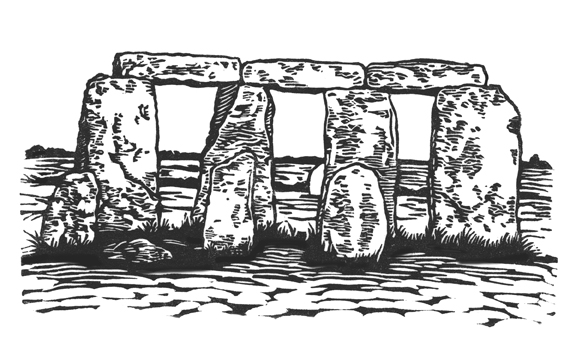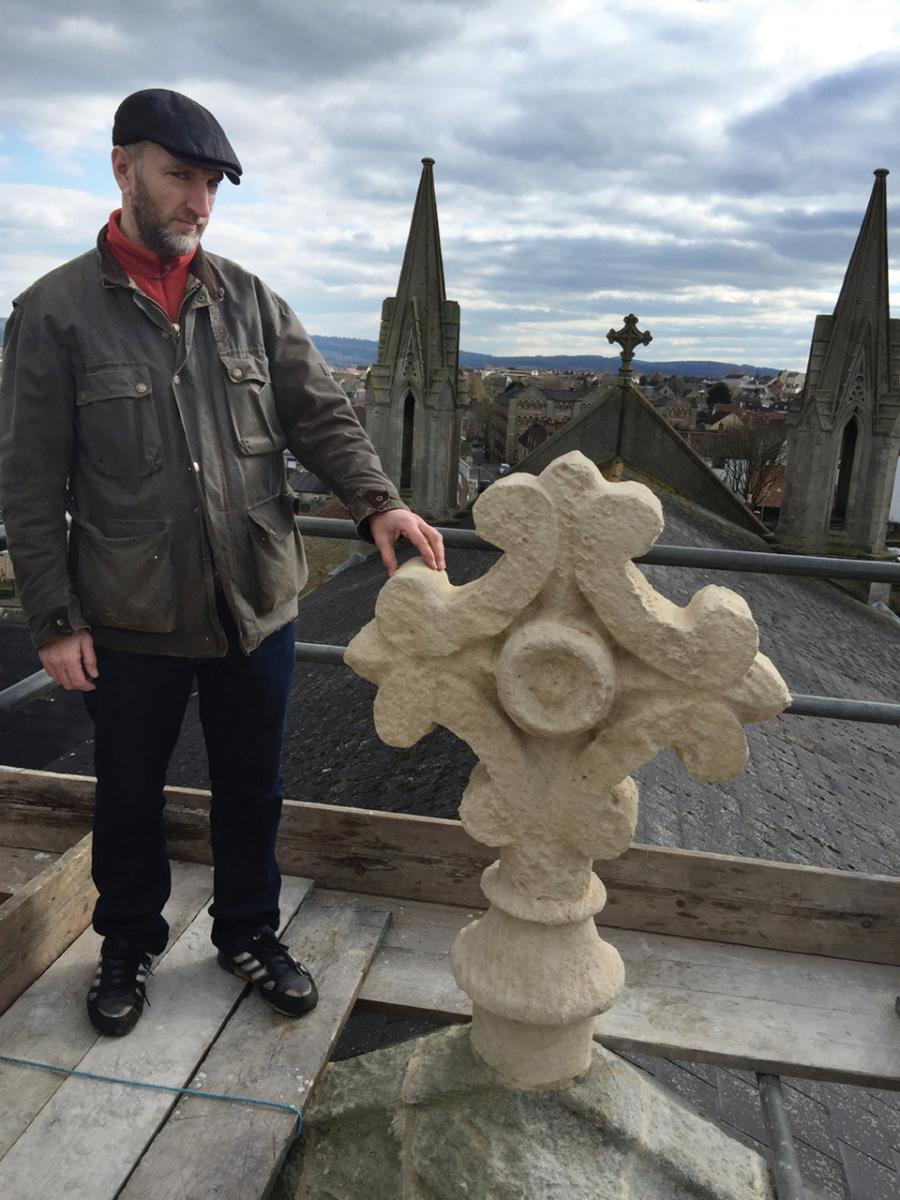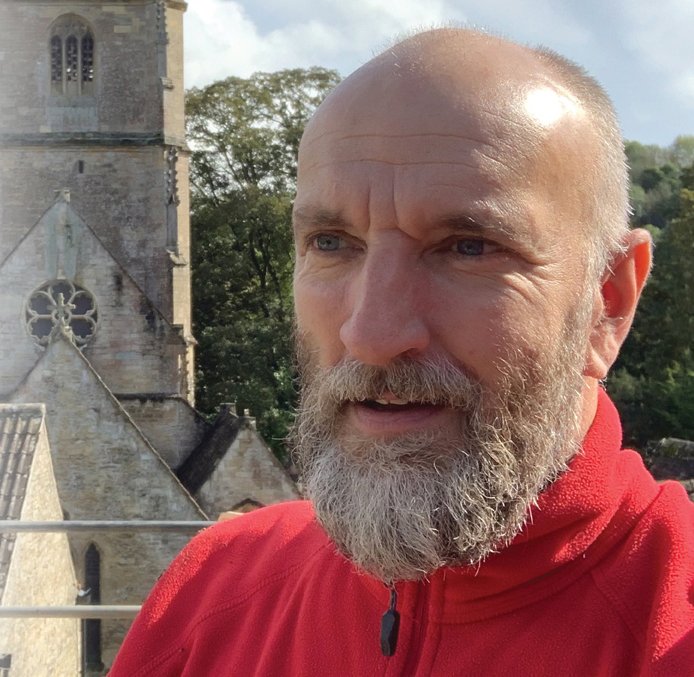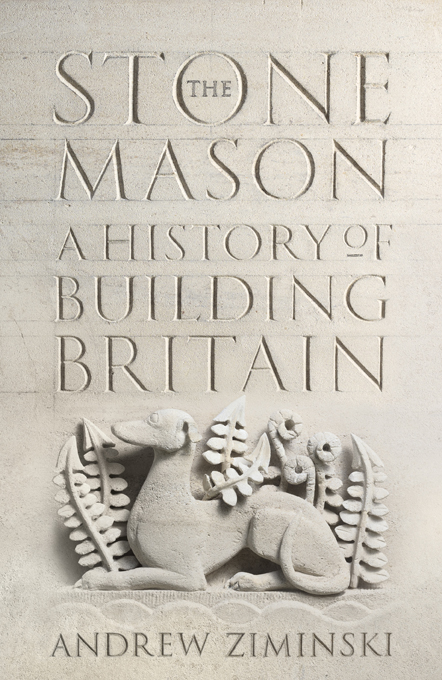...the ‘golden stain of time’, as John Ruskin put it, can sometimes be difficult to define to potential clients...
Natural Stone Specialist Editor Eric Bignell has spent some of the Covid-19 lockdown reading a new book by Somerset stonemason Andrew Ziminski, a Director of Minerva Stone Conservation. He recommends it.
The Stonemason - A History of Building Britain
Author: Andrew Ziminski
Publisher: John Murray Press
ISBN: 9781473663930
Number of pages: 336
Price: £20
To buy a copy of The Stonemason from Waterstones, click here.
Andrew Ziminski is taking the opportunity of the coronavirus shutdown to build himself a new workshop at his home in Somerset in order to enclose the old lean-to that was open to the elements.
He is also writing a book about ghosts, which is a follow-up to the publication of his first book, The Stonemason - A History of Building Britain, published in March to extraordinary acclaim in The Telegraph, The Daily Mail, The Spectator, The Times and a whole host of book and history magazines including the Literary Review – not bad for a first book. You could even imagine it picking up a literary award because stonemason Andrew Ziminski’s first book is a fine piece of literature.
It is presented as non-fiction, but is what is described as infotainment. It is the story of Andrew’s 30-year journey through life as a stonemason condensed into the course of one year.
Most of Andrew’s career in building conservation has been as a Director of his firm of Minerva Stone Conservation in Frome, Somerset. The journey in the book features Laughing Water, his canoe, and his nameless whippet dog. Andrew Sharland, who he has worked with for 25 years and is his business partner in Minerva, is also, as Andrew says in the acknowledgements in The Stonemason, “an unseen, benevolent presence throughout most of the tales in this book.”
The Stonemason is divided into sections, categorised by three stones (sarsen, limestone and marble), an interlude, and finally concrete. And the year is broken up into seasons categorised by spiritual festivals, such as Hallowe’en (although the chapter is given Hallowe’en’s Celtic name of Samhain, which shows how literary the book is). Samhain (pronounced sow-ain, in case it’s new to you, as it was to me) starts and concludes the journey. And it’s not the only festival that was new to me. Another chapter is called Quinquatria, which I discover is a festival sacred to the Goddess Minerva, celebrated from 19-23 March.
Other chapter titles are more familiar: Winter Solstice; Maundy Thursday, Armageddon(!); Whitsuntide; The Feast of the Transfiguration; Autumnal Equinox; Michaelmas. They give you an idea of a certain spirituality to Andrew’s odyssey – and it is, like any good odyssey, about so much more than simply moving from A to B. It is also a journey of personal exploration and discovery that moves from the Neolithic to Le Corbusier’s concrete ‘machines for living in’, stopping off along the way at the intervening periods represented by their built heritage. Each place Andrew visits on his journey is the jumping off point for all kinds of journeys spanning the globe and the millennia of human history.
I am a stonemason not a historian and have concentrated on the buildings I have worked on and know best...
He also provides insights into the attraction of stonemasonry. From the Armageddon chapter (referenced in the chapter is the poem Psychomachia from the fifth century, which is about a battle between good and evil for souls, hence the chapter title) when he’s carving a lion in a block of Chilmark limestone: “Some of my heavyweight hammers and chisels are over eighty years old, inherited from a carver from Dorset’s Isle of Purbeck, but my favourite is my modern dense white nylon mallet; after thirty years of use it has hefted itself to my hand more than any other tool. It’s quite indestructible and has helped to pay the rent pretty much every day since leaving college. The biggest fear is that it will be lost or not be returned by an apprentice. It propelled the one-inch-wide steel claw chisel across the face of the soft stone to create a roughed-out profile covered in tiny furrows. Now I was ready to cut the detailing into the lion’s face. For this the mallet-headed claw chisel worked well. I worked from the centre to round away the sides, removing the stone that wasn’t nose-shaped and slowly the haughty profile began to reveal itself.”
It is a journey of ideological exploration of various kinds, ranging from the hopelessness of homeless drug takers to the appreciation of the Japanese concept of wabi sabi (the beauty of the imperfect) in conservation.
Andrew writes: “...the ‘golden stain of time’, as John Ruskin put it, can sometimes be difficult to define to potential clients who do not understand the importance of a building’s history and patina. If they want a restoration job, then I walk.”
Saying the book is ‘literary’ is intended as a compliment. I have read a number of books by stonemasons and I would not describe any of the others as ‘literary’.
Andrew’s description of a visit to Portland is an example of the almost poetic nature of much of his prose, as well as its broad scope: “The adjacent open-cast quarry was a vast silent moonscape, now unused, but by the entrance to a modern underground mine shaft, blocks of roach stone were piled high ready for the saw. I went over and admired the combinations of fossils it held. My favourite was the outline of the Portland screw, Aptyxiella portlandica – carrot-shaped with a thick spiral thread into it, a long-vanished curiosity.”
He goes on to explain that Portland was where Robert Hook first realised there had been species that no longer existed and speculated on evolution 250 years before Darwin. The text effortlessly transfers to The Monument in London built of Portland stone by Wren and Hooke, “drawing together the purest and most harmonious parts of the Enlightenment.”
Intermingled with the history, the geology and the philosophy are observations that could come only from someone who had actually worked on the buildings, like that from Salisbury Cathedral where he says: “As we worked, a hoppy odour rose from the nearby Gibbs Mew brewery, and the conversation kept coming back to Bishop’s Tipple, their much missed masterpiece 6.5 per cent ale.”
Or: “One mate rapidly dragged on the chains of the block-and-tackle hoist, another was ready to trowel the wet mortar down at the right time so that its moisture wasn’t sucked out too quickly as we slid our new work, a perfect fit for the gaps that had been cut to accommodate it, into position.”
Making the book into a year-long odyssey keeps the story moving on at a cracking pace as well as providing structure. As Andrew says in the introduction: “In this book, I have tried to plot a roughly chronological journey through the building of Britain from the Neolithic to the present day, and across the year, exploring how our ancestors constructed the world we live in today. I am a stonemason not a historian and have concentrated on the buildings I have worked on and know best, so this is very much a partial and personal history, told from the inside out. I hope you enjoy it.”
The publication of the book was to have been accompanied by a book-signing lecture tour, although that has been scuppered by the Covid-19 clamp-down that has given Andrew time to build his workshop. He is hoping the shut-down does not go on too long as there are only so many workshops he needs. He hopes there will be an opportunity for the lecture tour / book signing next year when it is intended to publish a paperback version of The Stonemason.

Above. One of the linocuts by Clare Venables that are at the start of each chapter.
A nice touch is that the linocuts at the start of the chapters were produced by Andrew’s wife, Clare Venables (whose dad is Terry Venables, but not the Terry Venables of football fame). Andrew and Clare met at Weymouth College, where Andrew studied stonemasonry having “blagged £1,000” from the local authority and signed on as unemployed, which you could in those days to get benefits and a housing allowance while studying. Clare, a decorative plasterer and illustrator, also drew the maps in the book.
Writing the book was a leap of faith. Andrew had never attempted anything like it before. He does not have a television and he reads a lot but his writing had been confined to reports on buildings and a couple of articles for the Society for the Protection of Ancient Buildings (SPAB), for which he is full of praise and of which he is a William Morris Craft Fellow. These days Andrew is also a Fellow of the Society of Antiquaries and consultant to the Salisbury Diocesan Advisory Committee for the conservation of stonework and monuments. But he had certainly not written anything like the 80,000 words or so of The Stonemason.
He wanted to write the book because he felt there was a gap in literature of writing by artisans. “Working people don’t really write books,” he says. “People aren’t interested in their opinions, but with The Stonemason they seem to be... I have done my job.”
It took him five years. “I spent a year messing about with it in my head then I thought: fuck it, I’m just going to do it.”
He says honing the craft of writing was like learning stonemasonry and he started hesitantly. The first chapter took him a year to write and repeatedly re-write. The final chapter was finished in three weeks and did not change much from the original draft.
“Writing is like stonemasonry – you start with a rough block and work it down to smooth surfaces. Once it’s perfect you move on to the next bit.”
Most first-time authors hawk manuscripts around agents and publishers in the hope that someone will accept them. Most never are accepted. Andrew always intended his should be published by John Murray (Publishers) because he had read a number of books published by the company that he had enjoyed, particularly Patrick Leigh Fermor’s A Time of Gifts, which is a memoir of the first part of the author’s journey on foot across Europe from the Hook of Holland to Constantinople in 1933/34.
Once Andrew had completed the first three chapters of The Stonemason he submitted them to the publisher, and not only were they accepted but he was given a handsome advance to complete the book. He was working with Georgina Laycock of John Murray (Publishers), who, he says, would return the edited chapters to him with suggestions and observations about the writing.
Andrew tells the story of how he became interested in stonemasonry in his introduction in The Stonemason. He got involved in the dismantling of an old brewery building, the 17th century Reigate House, and its rebuilding at the Weald & Downland Museum of buildings near Chichester.
He left school without qualifications and says his real education began with that building and working alongside ‘Mick the Mason’ at Weald & Downland. “I learnt more from him than I have from anyone else,” he says.
Having spent five years writing the book he then spent a few weeks carving the cover, hand cutting the title and carving the whippet and some ferns beside water into Bath Stone. The publishers have complemented that work by giving the cover a texture reminiscent of stone.
The book comes satisfyingly full circle to the sarsen stones of Salisbury Plain where it begins with Andrew spending a fitful night in a long barrow near Stonehenge. He concludes: “Stone as a material has allowed the meaning of these monuments to the dead to endure beyond their time. As I have attempted to negotiate my own understanding of the past, I am left touched with the notion that every building, sculpture and structure I have seen in my journey was created by people who felt and thought in a way that was familiar to us, a thread of connection and culture that in some way will continue to run on through the generations.”
Below. Andrew is pictured on the roof of Holy Trinity Church near his home in Frome, Somerset.



